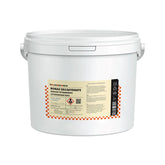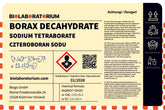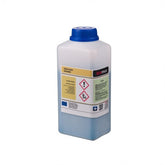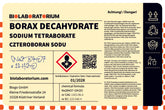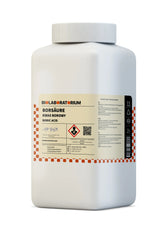Silicon dioxide – A versatile material from chemistry to modern technologies
Silicon dioxide, also known as silica or SiO₂, is a chemical substance that is widely distributed in nature and finds a variety of applications in different fields. From basic research in chemistry to modern technologies, this material plays a crucial role. In this blog post, we want to take a look at the fascinating properties and applications of silicon dioxide.
The structure and properties of silicon dioxide
Silicon dioxide is a chemical compound consisting of one silicon atom and two oxygen atoms. The structure of the molecule is relatively simple, but the resulting properties are extremely diverse.
The silicon atom is tetrahedrally surrounded by four oxygen atoms, with the oxygen atoms each connecting two silicon atoms. This linkage results in a crystalline lattice that, depending on the crystal structure, produces various forms of silicon dioxide, such as quartz, cristobalite, or tridymite.
The bonds between silicon and oxygen are very strong, making silicon dioxide an extremely stable and resistant material. It has a high melting and boiling point, is chemically very resistant, and possesses high mechanical strength. Furthermore, silicon dioxide is an electrical insulator and transparent to visible light, making it interesting for many technical applications.
Applications of silicon dioxide in chemistry and industry
Due to its diverse properties, silicon dioxide finds numerous applications in chemistry and industry. Some of the most important applications are:
Catalysts and carrier materials
Silicon dioxide is often used as a carrier material for catalysts because it provides a large surface area and is chemically stable. Silicon dioxide-based catalysts play an important role in petrochemistry, exhaust gas purification, and many other industrial processes.
Glass and ceramic production
Silicon dioxide is a main component of glass and ceramics. It gives these materials their hardness, stability, and transparency. In the glass industry, silicon dioxide is used to produce window glass, containers, optics, and many other glass products.
Fillers and Reinforcing Agents
Silicon dioxide is used as a filler and reinforcing agent in plastics, rubber, coatings, and paints. It improves mechanical properties, increases viscosity, and reduces wear.
Absorbents and Desiccants
Due to its high porosity and surface area, silicon dioxide is excellent as an absorbent and desiccant. It is used in filters, dehumidifiers, and drying agents.
Color Pigments and Fillers
Silicon dioxide is used as a color pigment in paints, coatings, and plastics. It also serves as a filler in cosmetics, toothpaste, and other products.
Medical and Pharmaceutical Applications
In medicine and pharmacy, silicon dioxide is used as an excipient in tablets, capsules, and other dosage forms. It improves the flow properties and stability of medications.
Silicon Dioxide in Modern Technologies
In addition to classical industrial applications, silicon dioxide also plays an important role in modern technologies. Particularly in nanotechnology and microelectronics, it has proven to be an indispensable material.
Nanotechnology and Nanostructures
At the nanoscale, silicon dioxide exhibits fascinating properties that can be utilized for the development of novel materials and applications. Nanostructures made of silicon dioxide are used in sensing, catalysis, optics, and electronics.
Microelectronics and Semiconductor Technology
In the semiconductor industry, silicon dioxide is an indispensable component. It is used as an insulator in integrated circuits, as a passivation layer, and for the production of thin-film structures. The miniaturization of modern electronics would not be possible without silicon dioxide.
Optical Applications
Due to its transparency to visible light, silicon dioxide is used in optical components such as lenses, prisms, and coatings. It is also used in optical fibers for telecommunications.
Energy Technologies
In energy technology, silicon dioxide plays an important role, for example in solar cells, fuel cells, and lithium-ion batteries. Nanostructured silicon dioxide materials can improve the performance and efficiency of these technologies.
Conclusion
Silicon dioxide is a versatile and fascinating material that plays an important role in numerous areas of chemistry, industry, and modern technologies. From its simple molecular structure to complex applications in high-tech products, the diversity of this substance is evident. With its unique physical and chemical properties, silicon dioxide is an indispensable component of our modern life.

